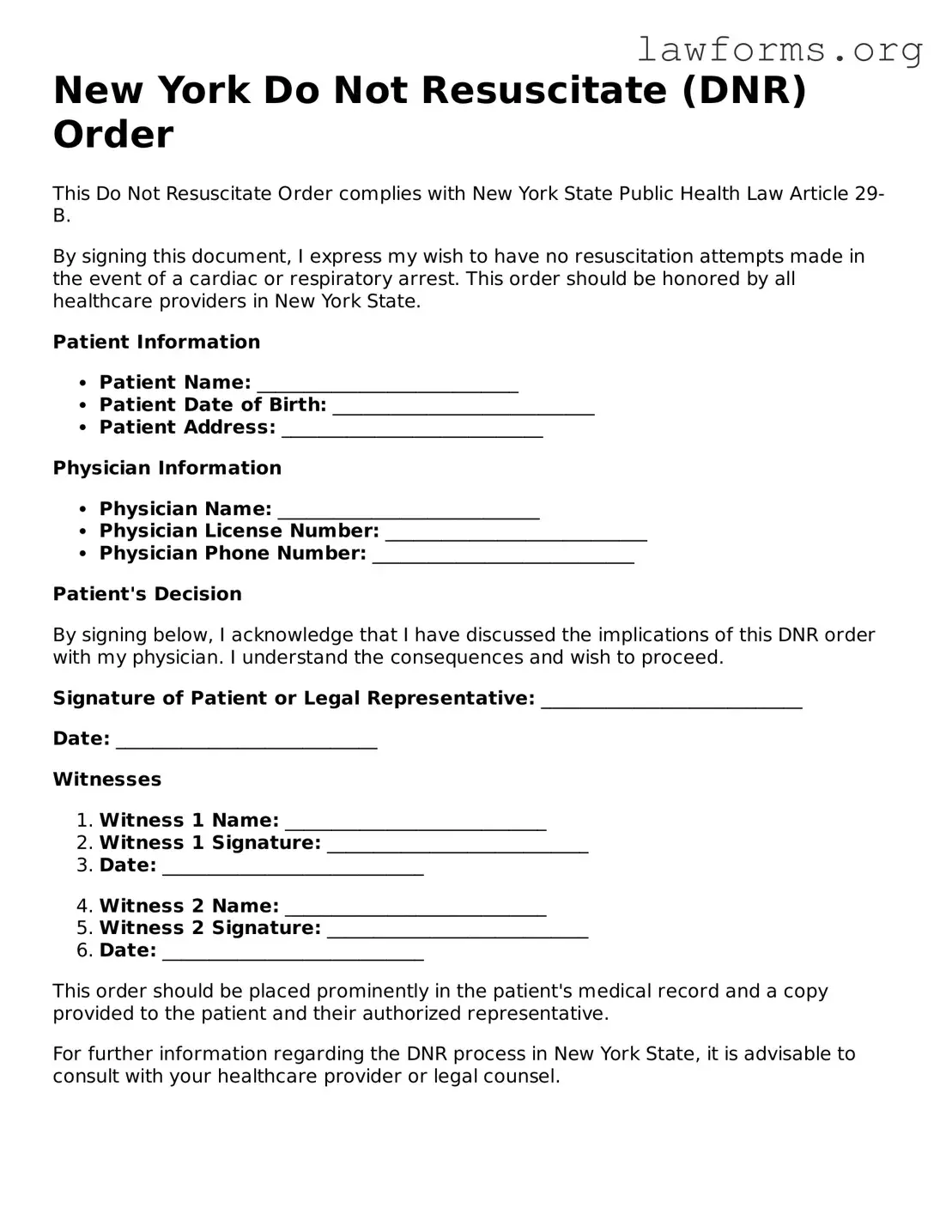New York Do Not Resuscitate (DNR) Order
This Do Not Resuscitate Order complies with New York State Public Health Law Article 29-B.
By signing this document, I express my wish to have no resuscitation attempts made in the event of a cardiac or respiratory arrest. This order should be honored by all healthcare providers in New York State.
Patient Information
- Patient Name: ____________________________
- Patient Date of Birth: ____________________________
- Patient Address: ____________________________
Physician Information
- Physician Name: ____________________________
- Physician License Number: ____________________________
- Physician Phone Number: ____________________________
Patient's Decision
By signing below, I acknowledge that I have discussed the implications of this DNR order with my physician. I understand the consequences and wish to proceed.
Signature of Patient or Legal Representative: ____________________________
Date: ____________________________
Witnesses
- Witness 1 Name: ____________________________
- Witness 1 Signature: ____________________________
- Date: ____________________________
- Witness 2 Name: ____________________________
- Witness 2 Signature: ____________________________
- Date: ____________________________
This order should be placed prominently in the patient's medical record and a copy provided to the patient and their authorized representative.
For further information regarding the DNR process in New York State, it is advisable to consult with your healthcare provider or legal counsel.
